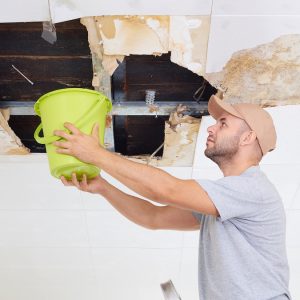How can you slow down water infiltration?
Water seems harmless at first glance, but it can lead to costly damage when left untamed. A small amount of water can erode a surface, letting in more water that leads to even more erosion. The key is to slow water infiltration or ideally, stop it completely.

Find the source of water
Where is the water coming from? How is it getting into the building? The first step in resolving the issue is finding the cause of it.
If you experience water infiltration after it rains, there is likely a leak in the roofing, windows, or other exterior surfaces. Inspect the building carefully to seal up any exposed joints. All it takes is a small crack to create a slew of costly damages.
If the water infiltration is not the result of rain on the building, there may be an issue with the plumbing or HVAC system. A leaking pipe or a clogged AC condensation line could be seeping water where it isn’t supposed to be.
Use thermal imaging for tough-to-find water leaks
Can’t quite pinpoint the source of water? You may want to contact a professional with thermal imaging technology. Thermal imaging cannot detect water directly, but it can detect subtle changes in temperature as a result of water. This identifies water leaks that are not visible to the naked eye so you can address the issue.
Correct and prevent future water infiltration
Once you’ve found the source of water infiltration, repair the issue as quickly as possible. Also make sure to inspect for other water leaks to ensure the entire building is sealed properly. From there, you can add water leak inspections to your routine maintenance programs to minimize the risk of damage. The sooner you take action, the less you’ll have to worry about mold, mildew, rot, and other potential damages.
